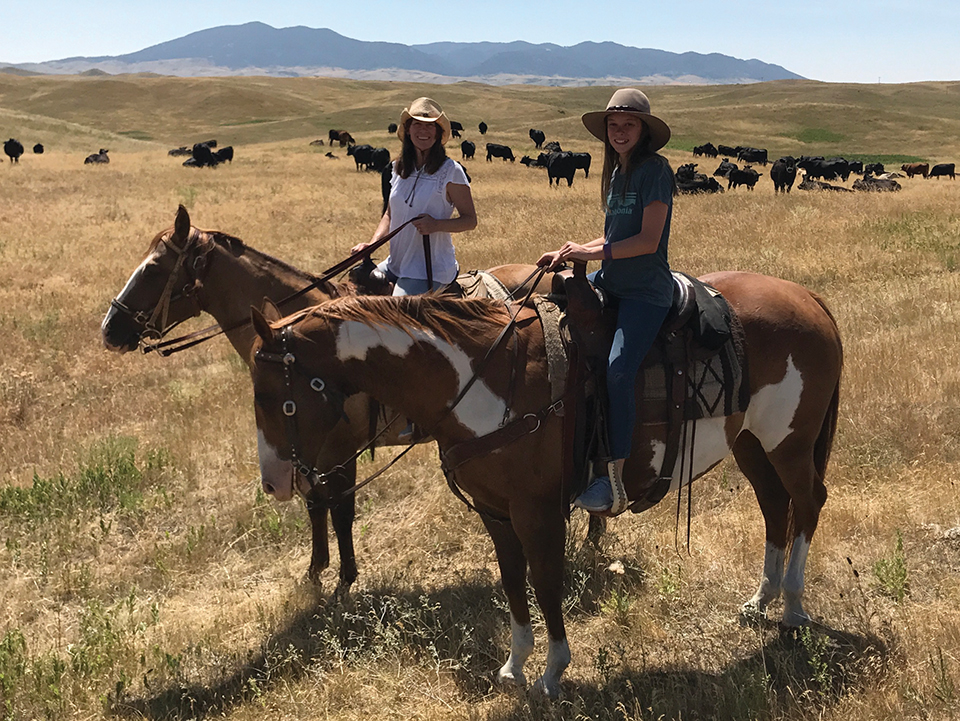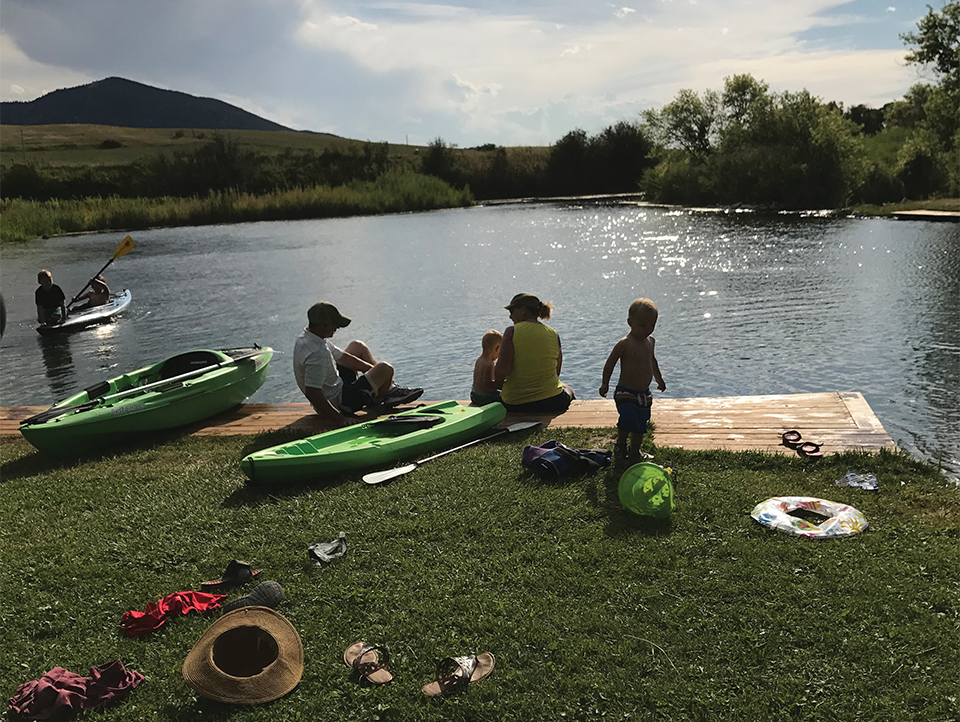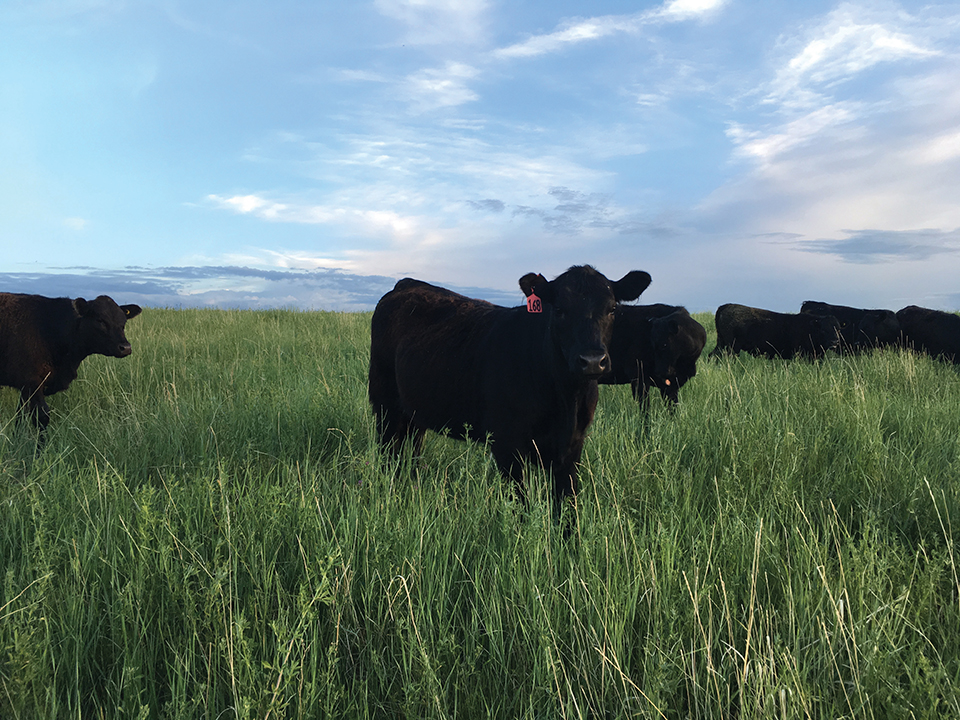Travel Time: Unplug and Explore

About 1,400 miles north and slightly west of Austin, Matt and Jamie Wickens — along with their three children — own and operate a fourth-generation working cattle ranch located on the edge of the Missouri River Breaks outside of Winifred, Montana.
In this remote area, they rent out a large cut-timber lodge accented by steep bluffs, roaming Angus beef cattle and stunning vistas of Big Sky country to guests seeking an escape from busy city lives and technology.
Meanwhile, in Austin, at my house near Lake Travis, school is out, summer is here and the battle for our kids to abandon their devices and head outdoors has begun. Soon the weather will also conspire against us, making it almost too hot to be in the sun.
This is when I stick in our “Lonesome Dove” DVD, watch Captain Call and Gus trek from Texas to Montana and dream about our annual trip to the Wickens’ ranch, a magical place for us.
We will ride horses, hunt for dinosaur bones, swim in natural hot springs, feed the pigs and experience the rural lifestyle of my ancestors, many of whom homesteaded in the area. Thankfully, it’s easier to reach Fergus County in Central Montana now than it was for Captain Call.
We fly into Billings, or sometimes Bozeman or Great Falls, rent a car and drive about two and a half hours to Lewistown. There, we stop at Albertsons and stock up on groceries. Then, just a few miles outside of town, our cell phones no longer receive coverage — we’re finally unplugged.
We look for mule deer, antelope and other wildlife in the distance. We have a little over an hour until we reach the ranch, and we already start feeling the freedom of the wild.
The mountains are on our left, and miles of wheat fields are on the right. Our daughters are giddy — they can’t wait to enter the cowgirl world again. Yep, this is what we come here for — where the pavement ends and dirt roads begin.

Some would say not much has changed since 1805 when the Lewis and Clark Expedition traveled through and documented this area. The frigid water in the nearby Judith River, named by William Clark after his wife, was my bathing spot several years ago when I came out here for an authentic cattle drive. I spent a week on horseback, herding hundreds of cattle to their summer pasture with a small group of tourists, one of whom had come all the way from Australia.
Matt and Jamie usually rent out their lodge to hunters, evidenced by bighorn sheep, elk and whitetail deer mounted on the walls. During hunting season, they say it is not uncommon to see 100 deer a day.
Our family is here in July, so we will spend most of our time on horseback, three-wheelers and nearby driving adventures. Our daughters’ first stop will be to dig for dinosaur fossils, knowing that professional paleontologists have had successful finds on the ranch.
Nothing beats a day of picnicking and swimming at Gigantic Warm Springs, a natural spring that reminds me of the unspoiled beauty of Barton Springs when I was growing up. According to David Vanek, whose family has owned the area since 1940, this is considered one of the world’s largest warm springs. Vanek said the two most popular months are July and August, and the entrance fee is $4. You may even get the place to yourself like we did a few years ago when we dined on Crock-Pot chili and played a lively game of volleyball on the water’s edge.
It’s worth venturing to the Charlie Russell Chew Choo, known as Montana’s premier dinner train. It winds through 56 scenic miles and crosses two historic trestles during its three and a half-hour voyage. Halfway through the trip, the train abruptly stops, and masked bandits board the train for a “robbery.” Our kids love it, especially when the bandits jump back on their horses after a pretend shoot-out and ride off into the sunset, literally.

One year, we went to the Annual Roy Open Rodeo in an open arena and watched bull riding, steer wrestling and kid barrel racing. On our way back, we drove by the area where my great aunt, Bridget Hickey, who is also the namesake for my firstborn, was one of the few female homesteaders in Montana in 1914.
She filed a 320-acre claim near Roy and initially lived there in a tent. Later, she, her sister and brother built a more livable wooden abode. Living to be 106, “Aunt Bridgie” taught homesteaders’ children for many years. Following in her footsteps, my father also lived in Montana one winter and taught in a one-room schoolhouse with no plumbing and no insulation.
As the vacation comes to an end, we thank the Wickens for another great summer and fly back home. As a life-long Austinite, living in my city that has become increasingly urban and unrecognizable, I find myself craving the unspoiled elements of Montana ranch life.
Although we won’t be moving anytime soon, I’m certain these trips up north are important to not only help us relax, but also to unplug and seek out high adventure.






